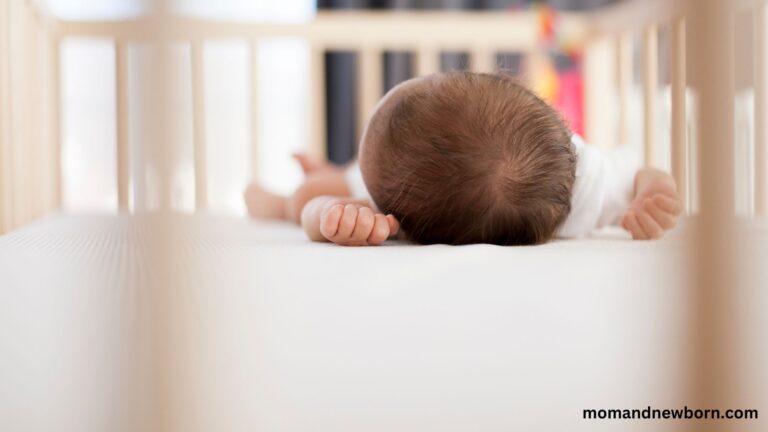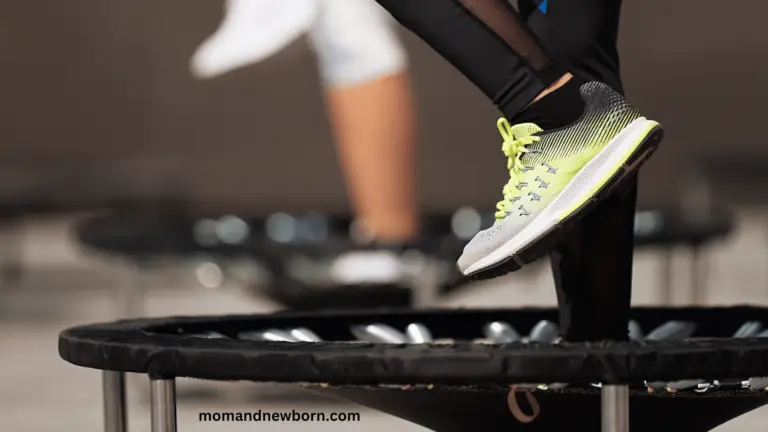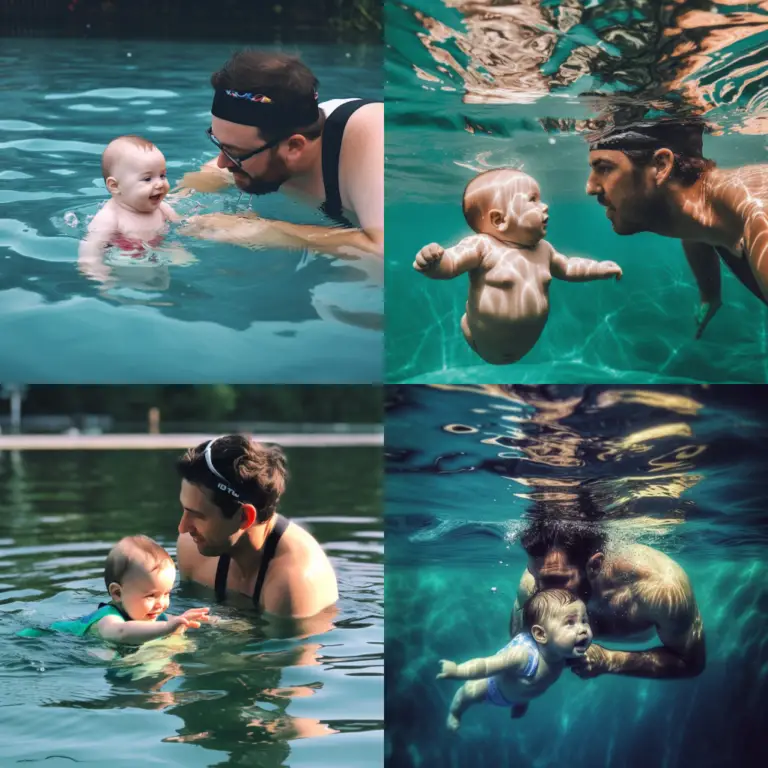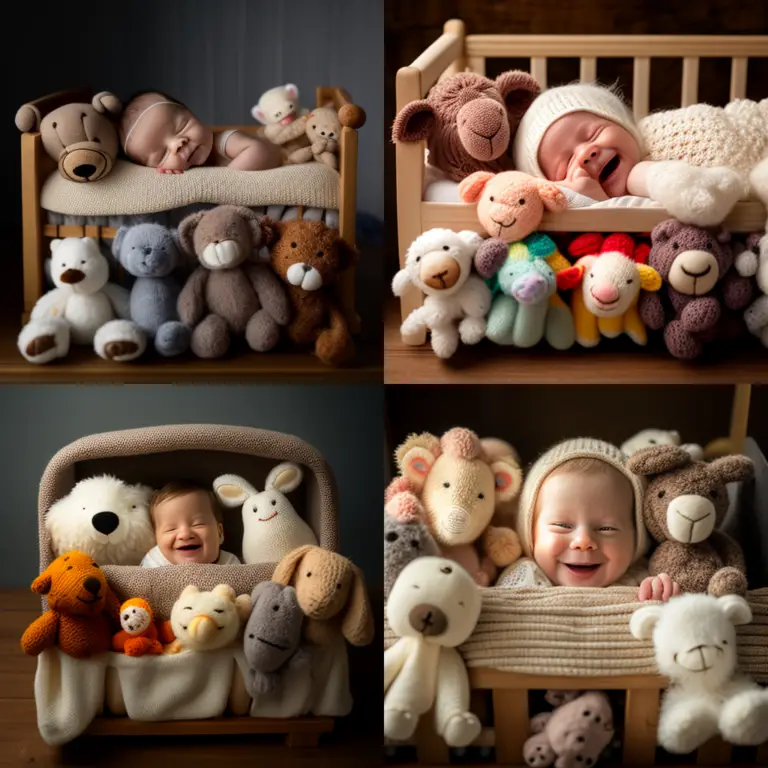Keeping Your Newborn Healthy: Debunking the Ceiling Fan Myth
Hey there, curious parents! Today, we’re tackling a question that might have you scratching your heads: Is it cool to use a fan for your newborn? Well, fear not because we’ve got you covered!
In this blog post, we’re diving headfirst into the world of ceiling fans and tiny humans. But hold your horses; there are some things to watch out for, too, like avoiding chilly drafts or pesky fan noise.
So, grab a cup of coffee (or a bottle of milk), and let’s embark on this adventure together!”
Is it OK to have ceiling fan on with newborn?
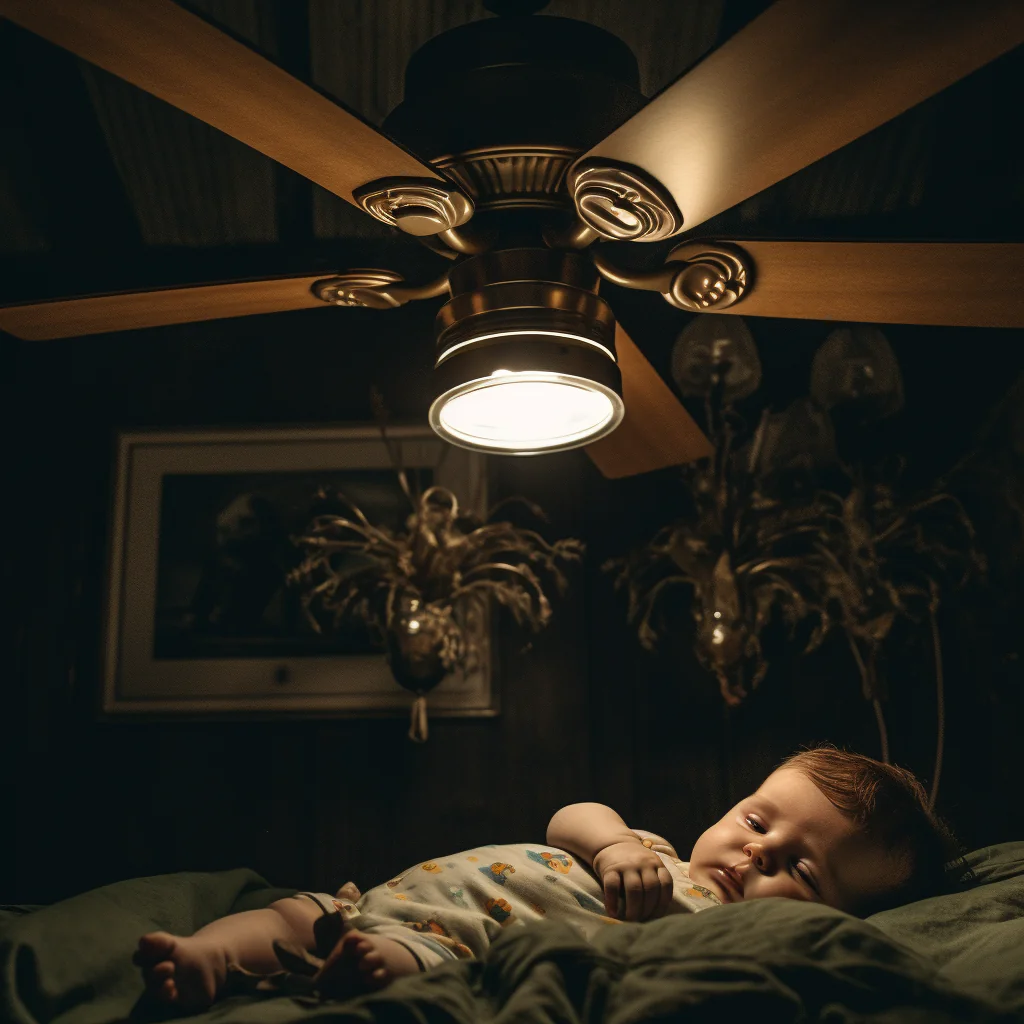
It is generally safe to have a ceiling fan on with a newborn as long as it is not too close to the baby and operates at a low speed. A gentle breeze from a ceiling fan can be beneficial for a baby as it can help circulate the air and prevent the buildup of stale air and carbon dioxide around the baby.
However, it is important to take some precautions to ensure the safety and comfort of your newborn. Here are some tips to follow:
- Ensure the fan is installed properly and securely to prevent it from falling or shaking.
- Keep the fan at a low speed to avoid creating a strong breeze that can be uncomfortable for the baby.
- Position the baby’s crib or bassinet away from the direct airflow of the fan.
- Use a fan guard or cover to prevent the baby from accidentally touching the blades.
- Dress the baby appropriately for room temperature to avoid overcooling or overheating.
- Monitor the baby’s reactions and adjust the fan speed or position.
Can babies get sick sleeping under fan?
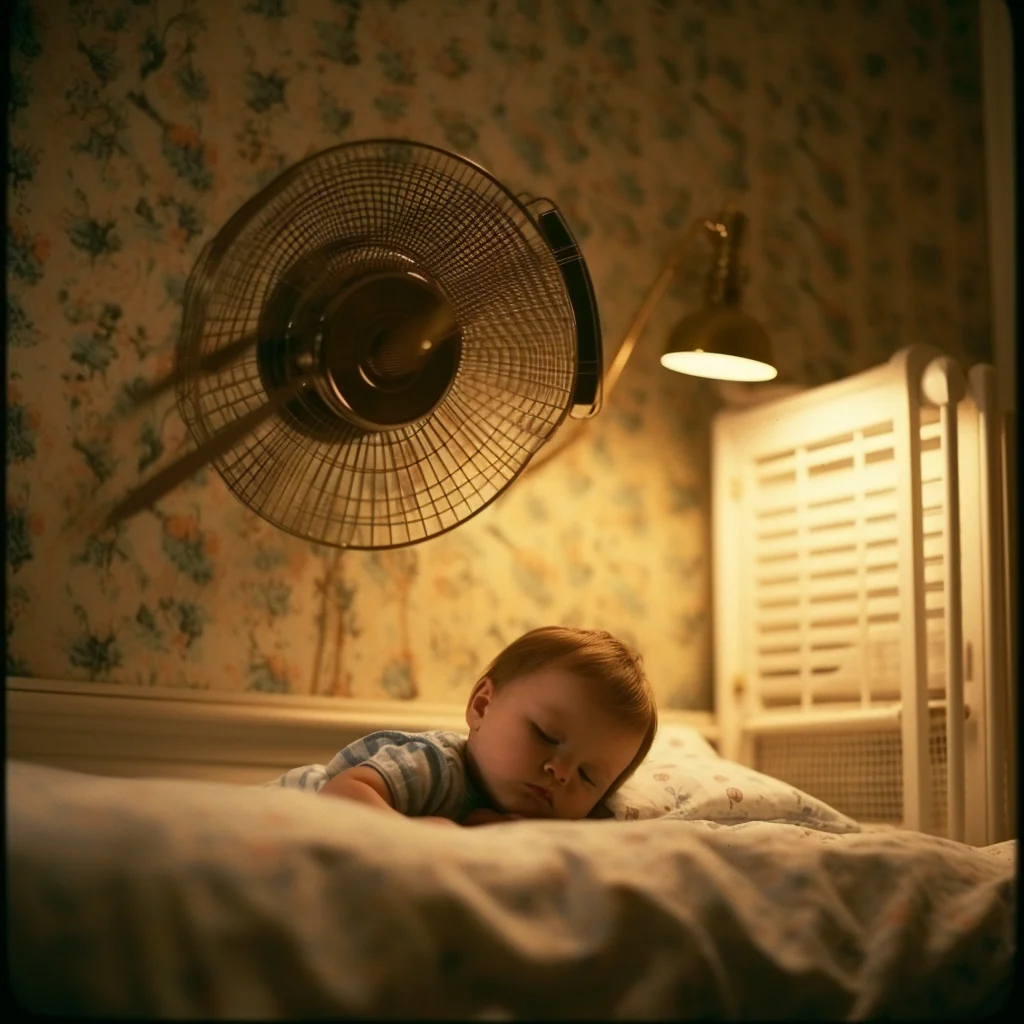
Babies can get sick from sleeping under a fan if it blows air directly on them or the room is too cold. However, if the fan is used properly and precautions are taken, the risk of your baby getting sick is low.
Direct airflow from a fan can cause the baby to feel too cold, especially if the fan is blowing cold air from an air conditioner. This can lead to a higher risk of the baby developing respiratory infections such as colds, flu, or pneumonia. Therefore, it is important to ensure that the fan is not blowing air directly on the baby.
Another factor to consider is the room temperature. If the room is too cold, it can increase the risk of your baby getting sick, even if the fan is not blowing directly on them. The ideal room temperature for a baby’s room is around 68-72°F (20-22°C). You can adjust the fan’s speed or direction or use additional blankets to regulate the temperature in the room.
To reduce the risk of your baby getting sick from sleeping under a fan, here are some precautions you can take:
- Position the fan so it does not blow air directly on the baby. You can aim the fan toward the ceiling or use a fan cover to direct the airflow.
- Dress your baby appropriately for the room temperature. Use a light blanket or swaddle to keep your baby warm without overheating.
- Keep the room temperature comfortable, between 68-72°F (20-22°C).
- Clean and maintain your fan regularly to prevent the buildup of dust or allergens.
What are the effects of a fan on a newborn?
| Positive Effects | Negative Effects |
|---|---|
| Improved air circulation | Overcooling |
| Reduced risk of SIDS | Dryness |
| Comfort and soothing | Noise |
To avoid the negative effects, here are some tips to follow:
| Safety Tips |
|---|
| Position the fan so that it is not blowing directly on the baby. |
| Use a fan guard or cover to prevent the baby from accidentally touching the blades. |
| Keep the room temperature at a comfortable level, between 68-72°F (20-22°C). |
| Dress the baby appropriately for the room temperature. |
| Monitor the baby’s reactions and adjust the fan’s speed or position if needed. |
Is fan noise bad for babies?
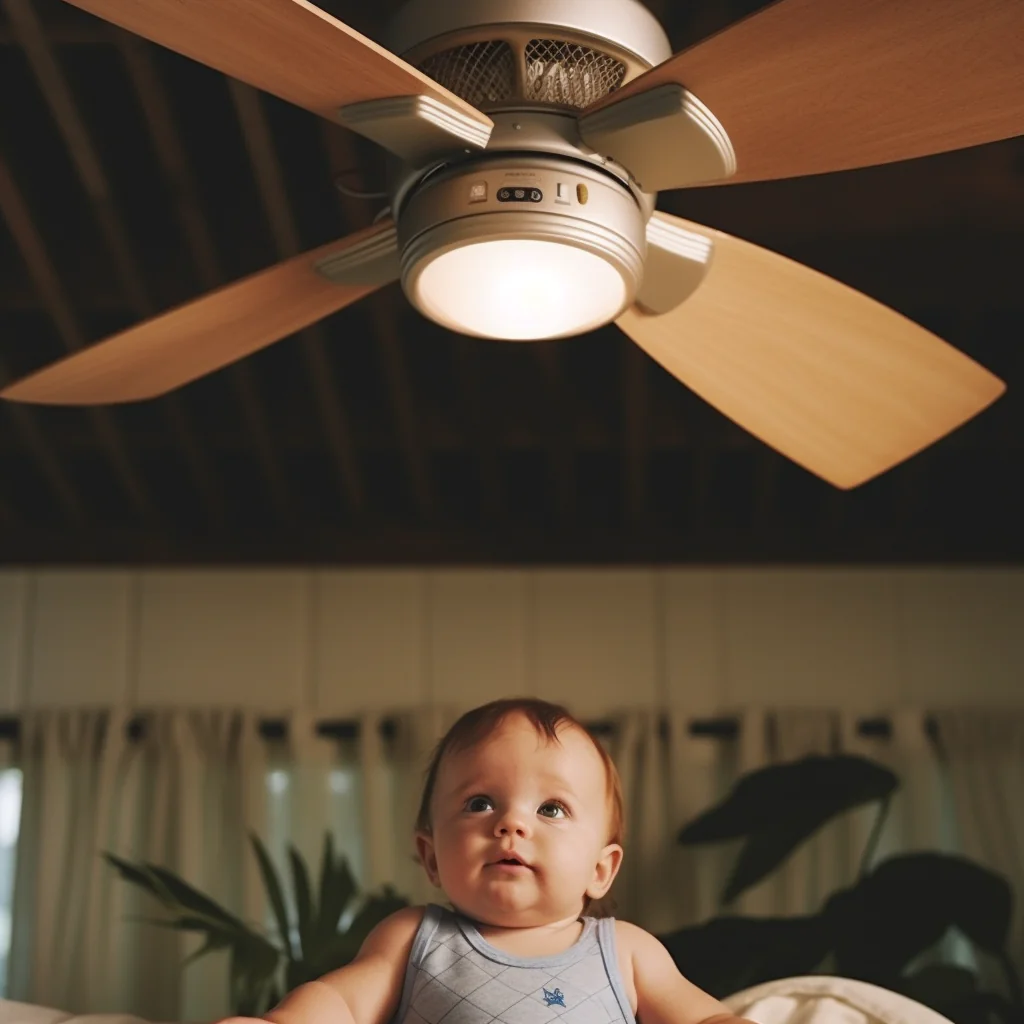
The noise from a fan is not generally considered harmful to babies. Some babies find the gentle hum of a fan to be soothing and comforting. However, if the fan noise is too loud or not operating smoothly, it could disturb some babies and interfere with their sleep.
It is important to keep in mind that every baby is different, and some may be more sensitive to noise than others. Notice that your baby has trouble sleeping or seems agitated by the fan noise. It may be worth experimenting with different fan speeds or placements to find a setting that is more comfortable for them.
In general, it is recommended to use a fan with a noise level of 50 decibels (dB) or less for a baby’s room. This is roughly equivalent to the noise level of a quiet conversation or a gentle rainfall. You can also look for fans with a “quiet mode” or “sleep mode” designed to produce less noise.
Is AC or fan good for a newborn baby?
| Air Conditioner (AC) | Fan |
|---|---|
| Regulates temperature and humidity in the room, helping to prevent overheating and dehydration. | Improves air circulation in the room, reducing the risk of Sudden Infant Death Syndrome (SIDS). |
| Provides a cool and comfortable environment during hot weather. | Provides a gentle breeze, which can be soothing and comforting for some babies. |
| Can help to filter out allergens, dust, and pollutants from the air. | Does not filter the air but can help to reduce the buildup of stale air and carbon dioxide. |
| Can be noisy and disturb the baby’s sleep if not properly maintained or if the temperature is set too low. | Can be noisy if the fan speed is too high or if the fan is not operating smoothly. |
| Can lead to dry skin and respiratory problems if the humidity is too low. | Does not affect the humidity in the room but can dry out the air if the room is already dry. |
To determine whether to use an AC or a fan, consider the following tips:
| Tips for Choosing Between AC and Fan |
|---|
| Use an AC if the temperature and humidity in the room are high, or if your baby is showing signs of overheating. |
| Use a fan to improve air circulation and reduce the risk of SIDS. Position the fan so that it is not blowing directly on the baby and adjust the fan speed or direction as needed. |
| Keep the room temperature at a comfortable level, between 68-72°F (20-22°C), regardless of whether you are using an AC or a fan. |
| Monitor your baby’s reactions to the AC or fan and adjust the temperature or fan speed if needed. |
Where should I put my newborn fan in the room?
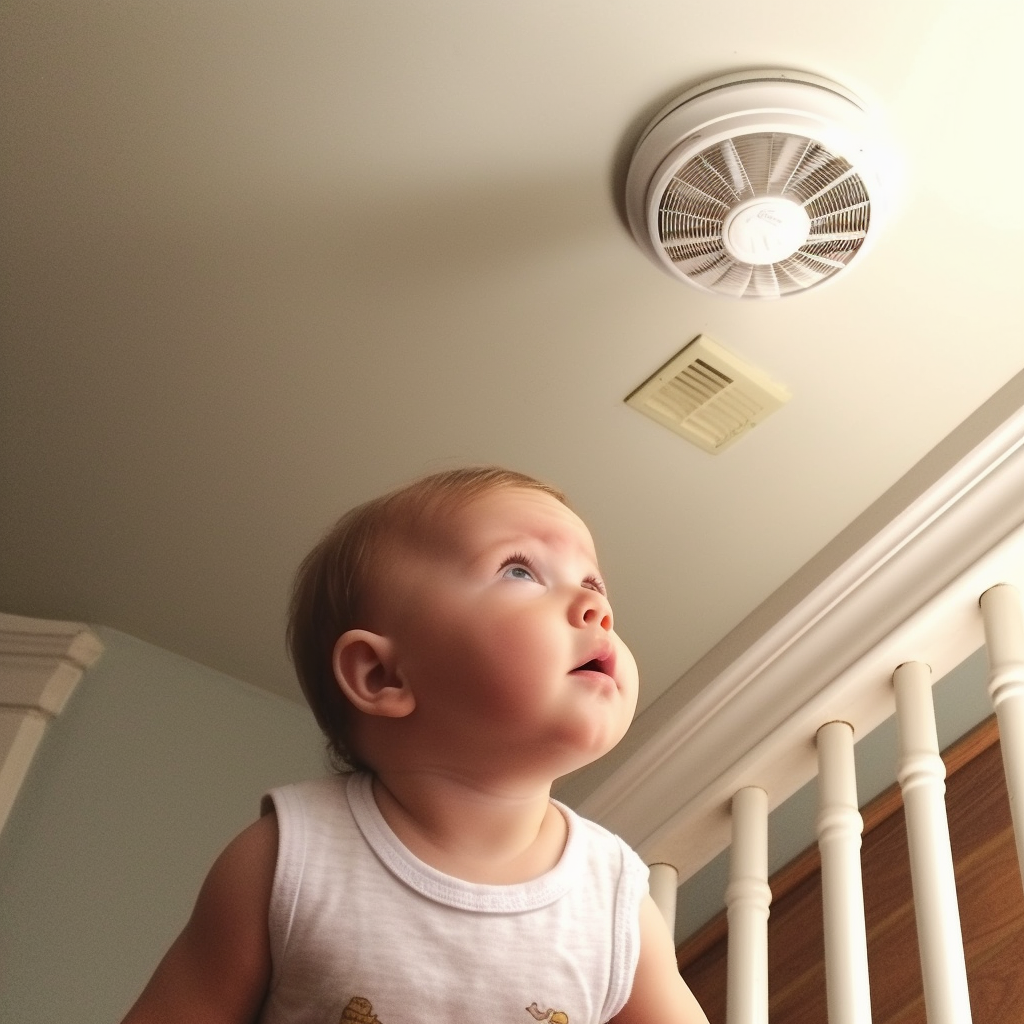
When using a fan in a newborn’s room, it is important to position the fan correctly to ensure the baby’s safety and comfort. Here are some tips on where to place your newborn’s fan in the room:
- Keep the fan at a safe distance: Make sure that the fan is placed at a safe distance from the baby’s crib or bassinet to avoid accidents. Ideally, the fan should be at least 3-4 feet away from the baby’s sleeping area.
- Avoid direct airflow: Avoid placing the fan directly in front of the baby or blowing air directly on the baby. Direct airflow can be too strong and uncomfortable for the baby. Instead, aim the fan towards the ceiling or use a fan cover to direct the airflow around the room.
- Use a stand or mount: Place the fan on a stand or mount that keeps it stable and secure. This will prevent the fan from falling or shaking and keep it out of reach of curious little hands.
- Position the fan for optimal air circulation: To get the most benefit from the fan, position it to create a gentle breeze that circulates air around the room. You can experiment with different positions and directions until you find the best setting for your baby.
- Consider the room layout: Consider the layout of the room and any potential obstacles, such as furniture or curtains, that could interfere with the airflow. Adjust the fan position or direction as needed to maximize air circulation.
What is the ideal room temperature for a newborn?
The ideal room temperature for a newborn is between 68-72°F (20-22°C). This temperature range is comfortable for most newborns and helps to prevent overheating or chilling. Overheating can increase the risk of Sudden Infant Death Syndrome (SIDS) while chilling can increase the risk of respiratory infections.
What noise is too loud for a baby?
Noise levels that are too loud for a baby can damage their delicate ears and interfere with their sleep and development. The World Health Organization (WHO) recommends that noise levels not exceed 45 decibels (dB) for infants under 1 year old.
To give you an idea of what noise levels look like, here are some common sounds and their corresponding decibel levels:
- Normal conversation: 60 dB
- Vacuum cleaner: 70-80 dB
- Hair dryer: 85-90 dB
- Blender: 90 dB
- Traffic noise: 85-95 dB
- Loud music or TV: 90-100 dB
- Firecrackers: 140-160 dB
Noise levels below 45 dB are safe for babies and should not cause harm or disturbance. However, noise levels between 45-60 dB can be mildly stimulating for some babies and may interfere with their sleep. Noise levels above 60 dB can harm a baby’s ears and lead to hearing damage, stress, and other health problems.
How can I keep my baby cool without AC?
Keeping your baby cool without AC is possible with a few simple strategies. Here are some tips to help keep your baby comfortable and safe in warm weather:
- Dress your baby appropriately: Choose lightweight, loose-fitting clothing like cotton or other breathable fabrics. Avoid dressing your baby in too many layers or heavy clothing that can trap heat.
- Use a lightweight swaddle or blanket: Swaddling your baby can help to keep them calm and comfortable, but it’s important to use a lightweight swaddle or blanket made of breathable materials to avoid overheating.
- Keep the curtains or blinds closed: Close the curtains or blinds in your baby’s room during the hottest part of the day to block out sunlight and heat.
- Use a fan: Use a fan to circulate air around the room and create a gentle breeze. Position the fan so it is not blowing directly on the baby, and avoid using high speeds that can make a strong breeze.
- Use a cool mist humidifier: A cool mist humidifier can help lower the room’s temperature and add moisture to the air. Be sure to clean the humidifier regularly to prevent the growth of mold or bacteria.
- Use a cool towel: Place a damp towel on your baby’s forehead or neck to help them cool down.
- Offer frequent breast milk or formula feeds: Breast milk or formula can help to keep your baby hydrated and cool. Offer regular feeds to prevent dehydration and overheating.




